The kitchen backsplash here shows a wide variety of traditional cement tile patterns installed in a random arrangement. Floral and Moorish geometric motifs are most prevalent.
- Environmentally friendly. They’re made of natural components, and because they’re not fired, no fossil fuels are burned in their production. They’re also made with natural pigments.
- Nonslippery. Bare feet stay put, even when wet.
- Customizable. Each tile is hand crafted. If you don’t see an in-stock color combination, size or shape you like, a manufacturer can easily create one for you.
This striking bathroom shows blue and white cement tile from Granada Tile installed at intersecting corners of the wall and step without the use of bullnose trim. The installer masterfully miter cut all these corner tiles at a 45-degree angle to allow the pattern to match up.
Durable, decorative and environmentally friendly, cement tiles may just take the cake!
Source: Houzz.com
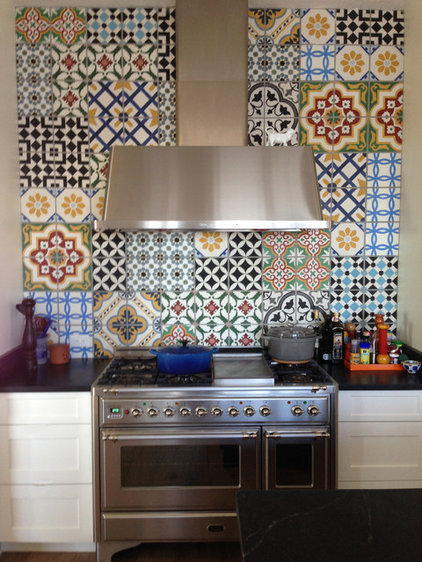
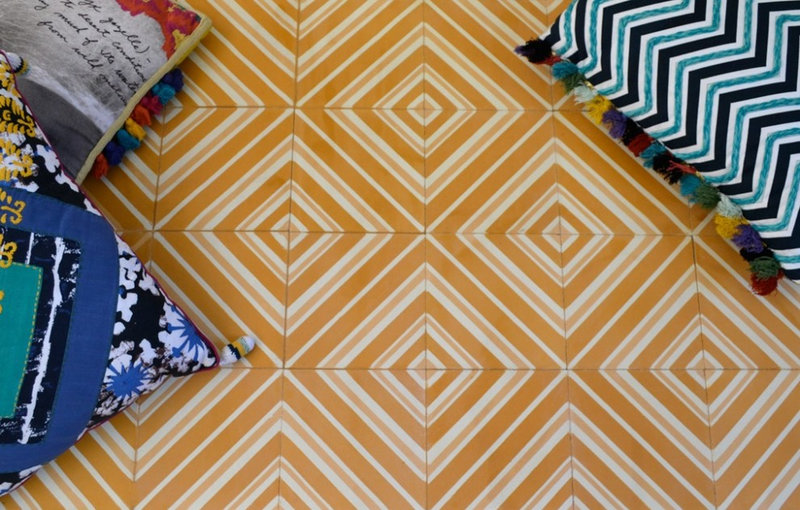
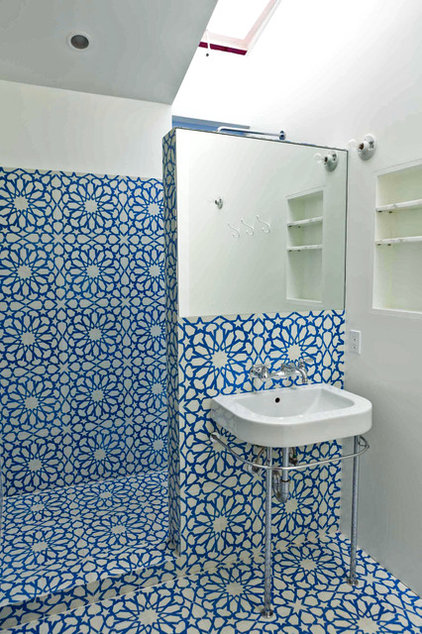
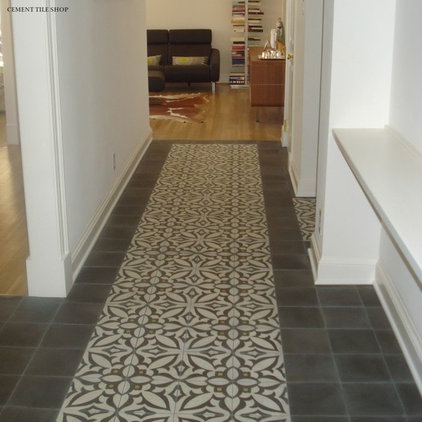
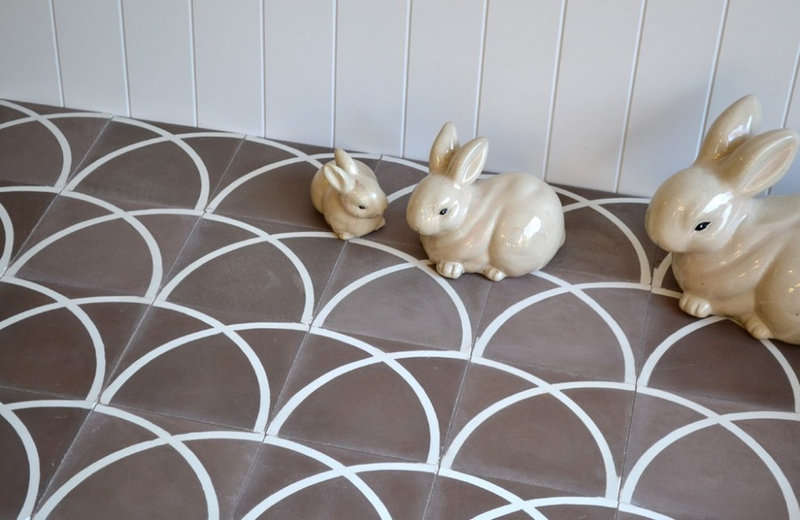
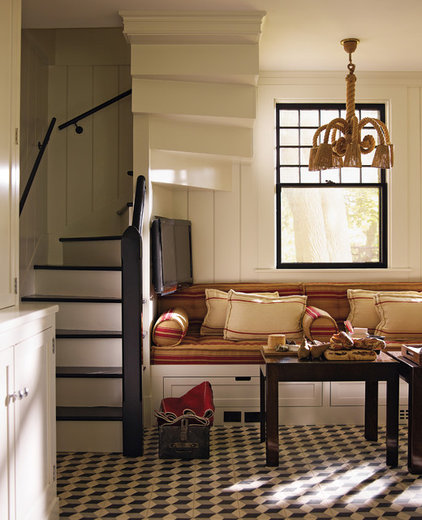
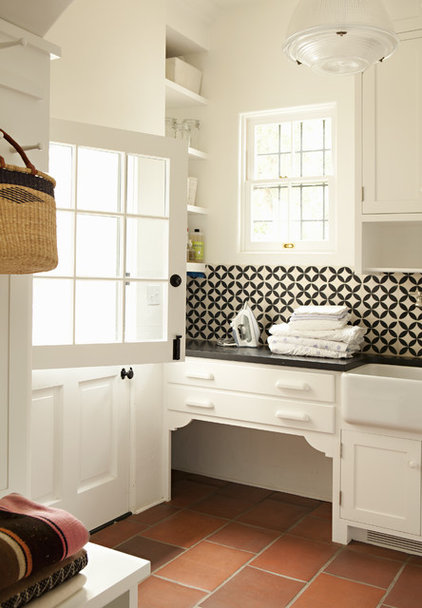
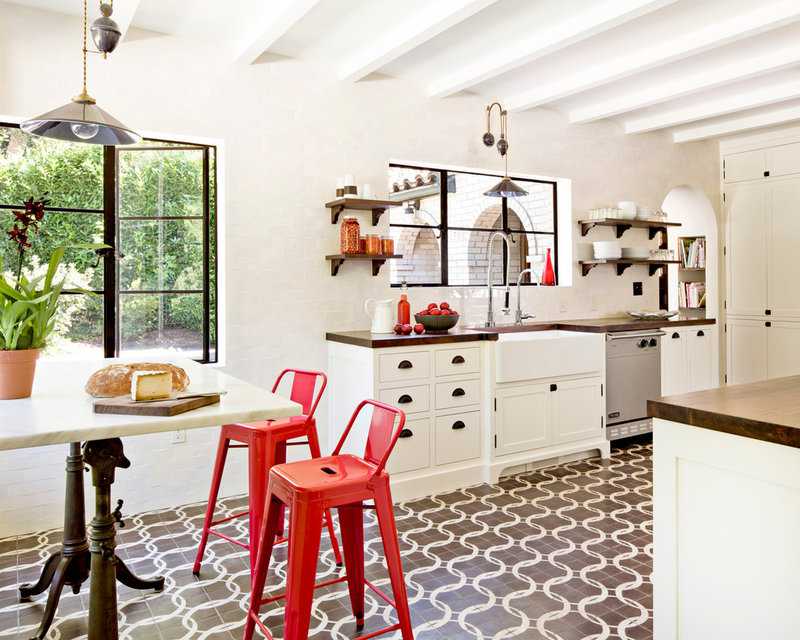
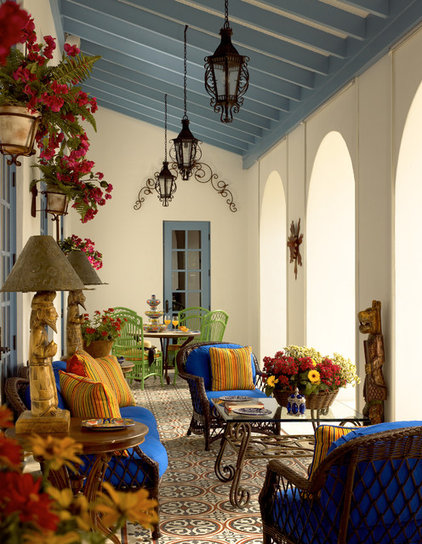






You should take part in a contest for one of the most useful sites on the web.
I am going to highly recommend this blog!